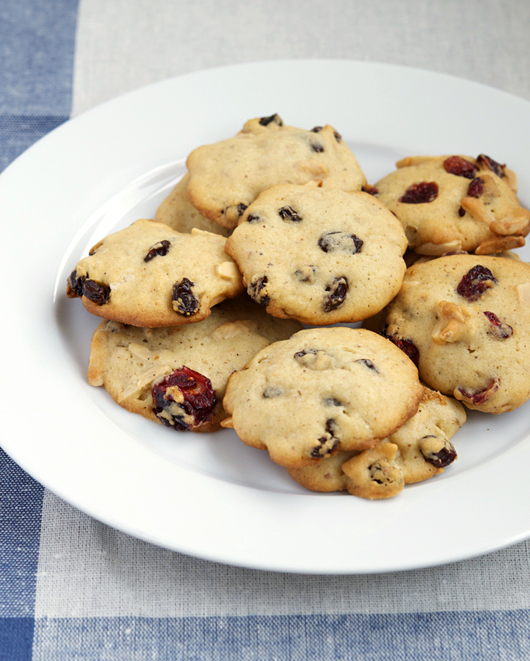
While itching to bake cookies last week and flipping through The Essential New York Times Cookbook, I came across a recipe for “jumbles”, revised from a recipe that a Times reader had sent in to the paper in 1878.
Jumbles? I had never heard of them, but the ingredients looked like the ingredients in your average cookie recipe, except with the addition of sour cream. Amanda Hesser described them as “crisp and buttery and trilling with freshly grated nutmeg.” I was intrigued.
Apparently, jumbles date back even further than the 1800s, to the Middle Ages. They supposedly originated in the Middle East, where the diet was pretty sugar-heavy, and traveled to Europe via the Moors. Unlike European cookies of the time, jumbles were also heavily spiced and scented with flavorings such as rosewater, cinnamon, aniseed, and caraway seeds. Because these dense cookies were meant to store for long periods, bakers would twist them into knots and rings so they could be broken up more easily to eat. Over time, jumbles retained the spices but lost their shape; recipes from colonial America directed bakers to form the dump into rough lumps instead of any elaborate twists. Indeed, Martha Washington’s own recipe for jumbles is pretty clear on ingredient quantities, but leaves the directions for shaping more ambiguous.
The New York Times recipe, modernized from its 1878, was very straightforward and called for just dropping teaspoonfuls of dough onto baking sheets. Here is what my first batch looked like out of the oven:
Plain looking and tiny, but still tasty, with a very pronounced nutmeg scent. Based on family recipes that others were posting online, it seems that decades ago, many people’s grandmothers were adding dried fruits and nuts to their jumbles. So I did the same. And made them bigger by dropping tablespoonfuls.
The second batch with cranberries, currants, and almonds were not only nicer looking but sturdier from the longer baking time. They’re softer and more biscuit-like than your average cookie, but would probably still be a crowd-pleaser. I ate half a dozen myself straight out of the oven.
______________________________________
Jumbles
Makes 3 to 4 dozen
- 1 1/3 cups all-purpose flour
- 1 teaspoon freshly grated or ground nutmeg
- Large pinch of salt
- 1/2 pound (2 sticks) unsalted butter, softened
- 1 cup sugar
- 1 teaspoon baking soda, dissolved in 1 teaspoon hot water
- 1/2 cup sour cream
- 1 large egg, lightly beaten
- 1 to 1 1/2 cups dried fruit and nuts, optional (I used cranberries, currants, and slivered almonds)
- In a small bowl, stir together the flour, nutmeg, and salt.
- In a mixer, beat together the butter and sugar until light and fluffy. Mix in the baking soda mixture and sour cream, then beat in the egg. With the mixer on the lowest speed, gradually add the flour until a dough forms. Cover the dough and refrigerate until chilled, about 4o to 45 minutes.
- Preheat the oven to 350°F.
- Line 2 baking sheets with parchment paper. If desired, mix in the dried fruit and nuts. Drop tablespoonfuls of dough onto the baking sheets about 2 inches apart. Bake the cookies until they are golden brown around the bottom edges, about 12 to 15 minutes, checking at the 12 minute mark. Transfer to cooling racks.
Adapted from The Essential New York Times Cookbook
______________________________________
More old-fashioned cookie recipes:
Benne Wafers from Simply Recipes
Madeleines from 101 Cookbooks
Alfajores from Leite’s Culinaria
Speculoos from Chocolate & Zucchini
Vanilla Almond Half-Moons or Vanillekipferl, Austrian Cookies, from Cooking Melangery


